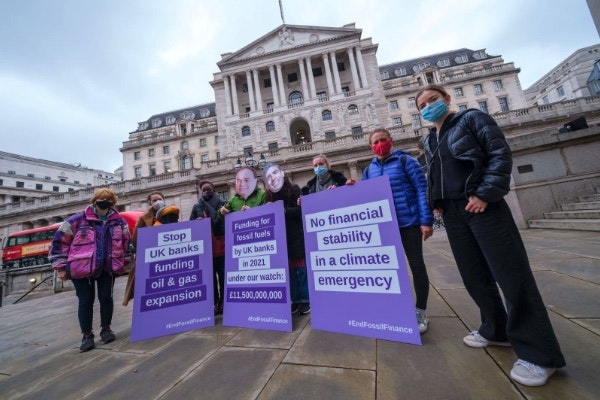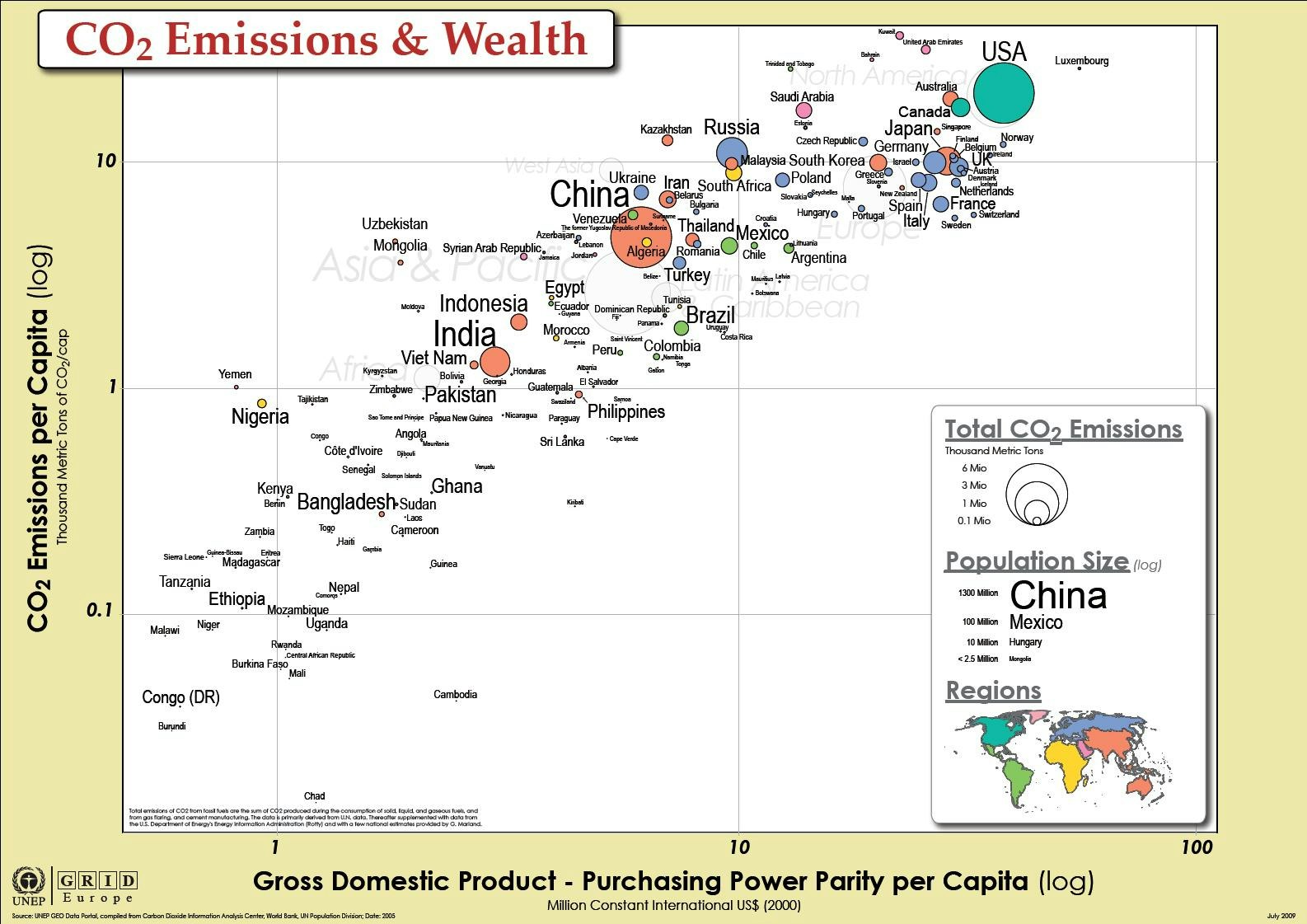Environment

[vc_row][vc_column][vc_column_text]
How the current economic system contributes to environmental destruction and accelerated resource consumption is not straightforward, and we don’t claim to have all the answers, but there are some observations we want to make.
1. Recessions make people and governments care less about the environment
One direct link between the current monetary system and the environment is the effect that recessions have on environmental regulation and investing in the long term. In a recession it is common to hear the argument that costs to businesses are too high due to regulations which are represented as onerous, and that the relaxation of these regulations would allow businesses to hire, resulting in reduced unemployment and increased output.
Although the validity of this argument is debatable, it is propagated by those who believe it to be true, by those who see the recession as an opportunity to lower their costs, and by those who did not believe the regulations were required in any case. While the benefits of environmental regulations accrue over the long-term, the government’s chances of re-election usually hinge on the short-term health of the economy. As such the long-term environmental benefits of regulation often lose out to short-term political and economic considerations.
2. The current monetary system may result in the need for continued economic growth
There are 4 observable ways that the monetary system results in the need for continued economic growth:
Debt repayments: since loans have to be repaid in instalments on fixed dates people are incentivised to pursue activities that provide quick returns. People pay off debt by producing more goods and services. Higher levels of debt incentivise higher levels of growth.
Asset price bubbles occur as banks create money through lending into assets they can receive the largest returns on, e.g. housing. In order to maintain standards of living when faced with an increase in the cost of essentials e.g. rent, individuals must either work more in order to pay the higher prices, or borrow more to make up the difference. Both borrowing and working more increase economic growth.
Loan repayments: when loans are repaid money is destroyed and the money supply shrinks. This generally results in a self reinforcing recession. To avoid this, new loans need to made simultaneously, increasing a need for growth as above .
Indebtedness in society is liable to increase economic activity, as individuals struggle to pay off the interest on their debt. In other words, debt drives growth.
[/vc_column_text][vc_tta_accordion][vc_tta_section title=”Why are environmentalists concerned about economic growth?” tab_id=”1507142200878-c2ddbef9-4aa6″][vc_column_text]Environmentalists are concerned with economic growth because it has always correlated directly with increased consumption of resources and pollution generation. A clear example can be provided by the graph below which looks at CO2 output over time against growth. Whilst this led to much higher standards of living in the first 100 years since the industrial revolution, ecosystems are now on the point of collapse and we are altering the climate to a dangerous degree by burning fossil fuels.

The only way around this dilemma is if economic growth can be decoupled from resource use and greenhouse gas emissions. Decoupling can be either relative, more efficient per unit of activity, or absolute, reducing the overall usage or emissions of a substance. Since relative decoupling still leads to an overall increase in the volume of material or emissions used and produced, only absolute decoupling could allow economic growth to continue in a sustainable way.
There is plenty of evidence of relative decoupling and the data shows that we are using fewer resources, less energy and generating less pollution per unit of activity than we were 25 years ago. But, there is no evidence of absolute decoupling at a system level. Indeed the overall trend is that of increased use of most of our resources (Prosperity without Growth, Tim Jackson).[/vc_column_text][/vc_tta_section][/vc_tta_accordion][vc_column_text]There are very real challenges facing the world over the next few decades, including likely crises in food production, climate, energy, and natural resources (including water). To focus on dealing with these extreme challenges, it is essential that we have a stable money system and are not distracted by financial crises that are caused by the design of the current system. The monetary system, being man-made and little more than a collection of rules and computer systems, is easy to fix, once the political will is there and opposition from vested interests is overcome. The real challenges of how to provide for a growing global population, a changing climate, and increasingly scarce natural resources, require a monetary system that works for society and the economy as a whole. For that reason, our current monetary system is no longer fit for purpose and must be reformed.[/vc_column_text][vc_tta_accordion][vc_tta_section title=”Further reading” tab_id=”1507142209893-9db99247-2cd1″][vc_column_text]Binswanger, H. C. (2012). Growth imperative and money creation–a new outlook on growth dynamics. In Balanced Growth (pp. 3-9). Springer Berlin Heidelberg.
Binswanger, H. C. (2013). The growth spiral. Springer.
Binswanger, M. (2009). Is there a growth imperative in capitalist economies? a circular flow perspective. Journal of Post Keynesian Economics, 31(4), 707-727.[/vc_column_text][/vc_tta_section][/vc_tta_accordion][/vc_column][/vc_row]